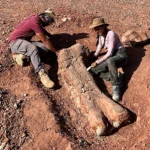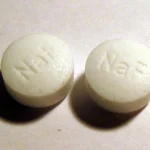
DNA, or deoxyribonucleic acid, is a molecule that carries the genetic instructions for the development, functioning, and reproduction of all known living organisms. It is made up of two long strands of nucleotides that are twisted together in a double helix structure. The sequence of these nucleotides is what determines the characteristics of each organism.
DNA is the most important molecule of life, as it contains all the information necessary to build and maintain an organism. It is located in the nucleus of every living cell and is responsible for the transmission of genetic information from one generation to the next. Without DNA, life as we know it would not exist.
DNA is also responsible for the development of proteins, which are the building blocks of life. Proteins are made up of amino acids, which directly correspond to the DNA sequence. This sequence is responsible for the structure and function of proteins, which in turn determine the physical characteristics of an organism.
In modern times, DNA has become a powerful tool in forensic science, medicine, and biotechnology. Scientists have been able to use DNA to trace ancestry, identify individuals, diagnose genetic diseases, and develop treatments for diseases.
Here are 30 interesting facts about DNA:
1. DNA stands for deoxyribonucleic acid and is a type of nucleic acid found in the cells of all living organisms. It is the genetic material that is responsible for determining the characteristics of an individual.
2. DNA is made up of two strands of nucleotides that form a double helix. These strands are linked together by hydrogen bonds and are held together by a sugar-phosphate backbone.
3. The four main components of DNA are cytosine, guanine, adenine, and thymine, which form the DNA base pairs.
4. DNA is found in the nucleus of cells, but it can also be found in mitochondria, chloroplasts, and other cellular organelles.
5. DNA is replicated during the process of cell division, which is how it is passed on from one generation to the next.
6. DNA is used to create proteins, which are responsible for the structure and function of an organism.
7. DNA can be modified through a process known as mutation, which is how new traits are developed over time.
8. DNA sequencing is a method of analyzing the order of the four main components of DNA.
9. DNA fingerprinting is a method of determining an individual’s identity by analyzing their DNA.
10. DNA repair is a process that occurs in cells to fix any damage caused to the DNA.
11. DNA profiling is a form of genetic identification that is used in forensic science.
12. DNA evidence can be used in criminal investigations to link suspects to a crime.
13. DNA testing can be used to diagnose genetic diseases and to determine the paternity of a child.
14. DNA methylation is a process that can be used to control gene expression.
15. Transcription is a process in which DNA is used to create a messenger RNA molecule.
16. Translation is a process in which messenger RNA is used to create a protein molecule.
17. The human genome is made up of about 3 billion base pairs of DNA.
18. DNA is made up of four different types of nucleotides, which are adenine, thymine, guanine, and cytosine.
19. DNA can be found in the nucleus of cells, but it can also be found in other cell organelles such as mitochondria and chloroplasts.
20. DNA is made up of two strands of nucleotides that form a double helix.
21. The sequence of the four main components of DNA can be determined through a process called DNA sequencing.
22. DNA profiling is a form of genetic identification that is used in forensic science.
23. DNA evidence can be used in criminal investigations to link suspects to a crime.
24. DNA testing can be used to diagnose genetic diseases and to determine the paternity of a child.
25. DNA methylation is a process that can be used to control gene expression.
26. Transcription is a process in which DNA is used to create a messenger RNA molecule.
27. Translation is a process in which messenger RNA is used to create a protein molecule.
28. The human genome is made up of about 3 billion base pairs of DNA.
29. DNA repair is a process that occurs in cells to fix any damage caused to the DNA.
30. Mutations can occur in DNA that can cause changes in the genetic material and can lead to genetic disorders.
Frequently Asked Questions about DNA:
- What is DNA and what does it do?
DNA, or deoxyribonucleic acid, is the blueprint of life. It’s a molecule found in nearly every cell of our bodies that carries the genetic instructions that determine our traits, like hair color, eye color, and even susceptibility to certain diseases.
Think of DNA as a long, twisted ladder called a double helix. The rungs of the ladder are made up of pairs of chemical building blocks called nucleotides. These nucleotides come in four types, abbreviated as A, C, T, and G. The specific order of these nucleotides forms the genetic code, which tells our cells how to build proteins, the workhorses of our bodies.
- How is DNA structured?
DNA has a fascinating double helix structure, discovered by James Watson and Francis Crick in 1953. Imagine a twisted ladder:
- The sides: The sides of the ladder are made of sugar and phosphate molecules alternating with each other.
- The rungs: The rungs of the ladder are pairs of nitrogenous bases. Adenine (A) always pairs with Thymine (T), and Cytosine (C) always pairs with Guanine (G). This specific pairing is crucial for DNA replication and protein synthesis.
The order of these bases is what creates the genetic code. Different sequences of A, C, T, and G code for different proteins, leading to the vast diversity of life forms.
- Can DNA be edited?
Yes, in recent years, scientists have developed powerful techniques for editing DNA, a field known as CRISPR (Clustered Regularly Interspaced Short Palindromic Repeats). CRISPR allows scientists to precisely cut, insert, or remove specific sections of DNA. This holds immense potential for treating genetic diseases by correcting faulty genes.
However, CRISPR is a complex technology with ethical considerations. It’s still early days, and scientists are working on ensuring its safety and responsible use.
- Is my DNA the same in all my cells?
Almost all your cells contain the same DNA. However, there are a few exceptions:
- Red blood cells: These lack a nucleus and therefore don’t have DNA.
- Sex cells (sperm and egg): These have half the amount of DNA compared to other cells. This ensures proper chromosome number when fertilization occurs.
There are also instances where DNA within a single person can vary slightly. This phenomenon is called genetic mutation, and it can happen due to errors during cell division or exposure to environmental factors.
- How is DNA used in forensics?
DNA profiling is a powerful tool used in forensic science. Every person’s DNA is unique (except for identical twins), except for very small variations. By analyzing DNA samples from crime scenes, investigators can identify suspects, link individuals to evidence, and even exonerate the wrongly accused.
DNA profiling relies on analyzing specific regions of DNA that show high variability between individuals. These regions, called Short Tandem Repeats (STRs), are like genetic fingerprints, allowing scientists to build a DNA profile and compare it to suspects or evidence.









